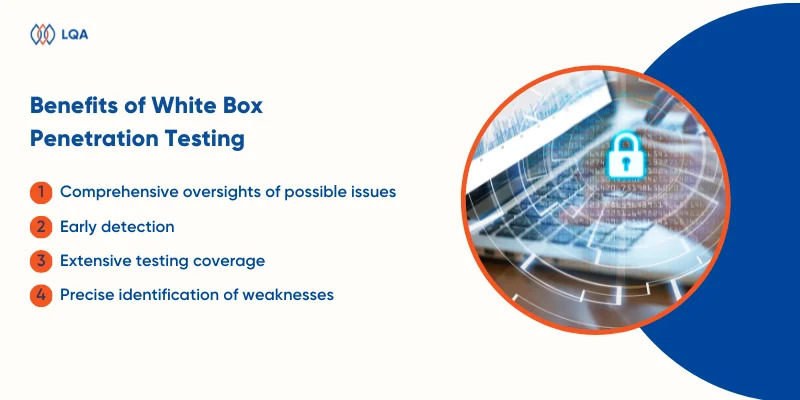
4 minute read
White Box Penetration Testing: Definition, Pros & Cons, and Essential Guide
from LTS Group Blog
by ltsgroup
In today’s rapidly evolving digital landscape, safeguarding software integrity is a top priority. White box penetration testing is a crucial cornerstone in the proactive defense strategy against emerging cyber threats. This detailed testing approach offers a unique viewpoint, much like a hacker’s perspective from inside the system, enabling a thorough exploration of potential vulnerabilities deeply embedded within the software.
As the digital world continues to expand and evolve, so do the sophisticated techniques of cyber attackers, white box penetration testing serves as a crucial tool in staying ahead of these threats by revealing weaknesses in the system’s core, allowing for proactive reinforcement of security measures.
Understanding the pivotal role of this method within software quality assurance is essential, as it not only identifies existing vulnerabilities but empowers organizations to proactively strengthen their software, fostering resilience against potential breaches and cyber-attacks.
What Is White Box Penetration Testing?
White box penetration testing definition, referred to as clear box or structural testing, is a technique that grants the tester access to the internal structure of the system to replicate a hacker’s actions and uncover potential vulnerabilities. This method provides a comprehensive understanding of the application, identifying all possible entry points into the system.
White box pentest is frequently employed to examine a system’s essential parts, particularly by companies that develop their software products, or integrate multiple applications. It is a method to evaluate a system’s security by assessing its capability to withstand various real-time attacks.

Benefits of White Box Penetration Testing
An efficient white box penetration test helps avoid the issues, errors, and oversights that can leave your businesses vulnerable to hackers. Let’s explore more benefits of white-box penetration testing:
Comprehensive oversights of possible issues: White box penetration testing offers the most comprehensive analysis of internal and external vulnerabilities from the internal point of view, which is not available to typical attackers.
Early detection: White box penetration testing is integrated into the early development stages, when there is no user interface, and even before the software application is available to users, which enables detecting the vulnerabilities at a very early stage.
Extensive testing coverage: White box penetration testing can identify weaknesses in areas that are unreachable for black box testing, for instance, an app’s source code, design, and business logic.
Precise identification of weaknesses: Since testers have detailed knowledge of the internal workings of the system, they can pinpoint specific weaknesses, potential security gaps, and flaws in the code logic. This level of detail often leads to more accurate identification of vulnerabilities.

Disadvantages of White Box Testing
Despite all the appealing advantages, white box penetration testing shows some drawbacks in certain situations:
High programming language requirements: Implementing white-box penetration testing involves internal network testing, which requires the testers to be familiar with critical programming tasks, like performing port scanning, SQL injection, and common attacks. By this, they will have a better understanding of the potential access points.
Limited real-world simulation: White box testing operates with complete knowledge of the system, which doesn’t accurately replicate real-world attack scenarios where attackers have limited or no knowledge. This approach might overlook vulnerabilities that would be apparent to external attackers working with less information.
Risk of biased testing: Testers, armed with complete system details, might inadvertently focus on known weaknesses or areas they are more familiar with, potentially overlooking other vulnerabilities that could be exploited by attackers with different perspectives.

Black Box, Grey Box and White Box Penetration Testing Differences
Black box, grey box and white box testing are all types of penetration testing – the practice of testing a computer system, network, or web app to find issues, errors, and vulnerabilities that an attacker could exploit.











